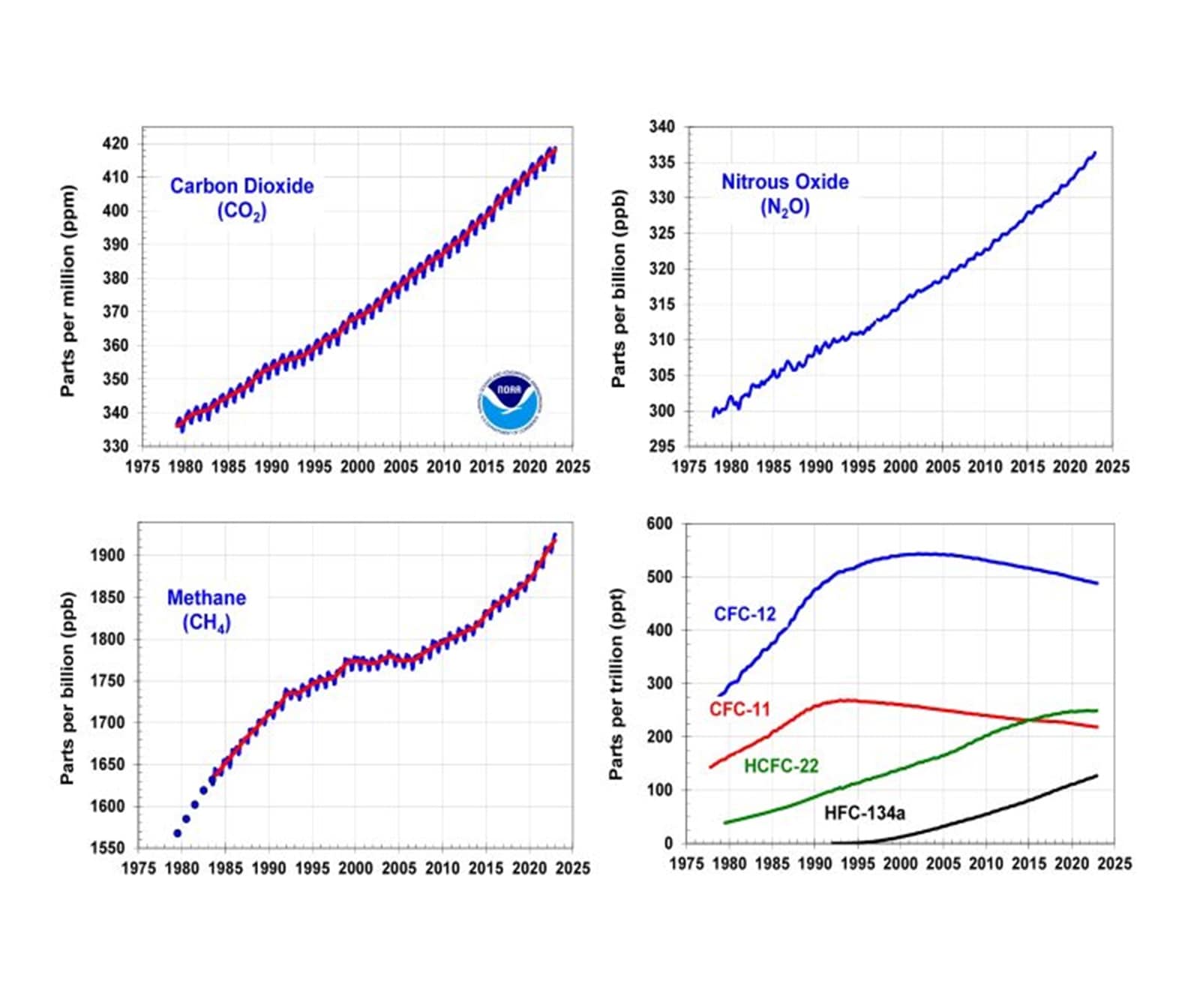Caught smuggling greenhouse gases: A first-of-its kind prosecution in the US
Michael Hart allegedly bought canisters of two types of banned refrigerants or coolants, used in obsolete airconditioners and refrigerators, in Mexico, and brought them to the US in his car.
 The border crossing between San Diego, California and Tijuana, Baja California state. (Wikimedia Commons)
The border crossing between San Diego, California and Tijuana, Baja California state. (Wikimedia Commons)A California man is facing criminal charges in a San Diego court for smuggling, not illegal drugs or weapons, but greenhouse gases (GHGs). These gases, some of which are used in cooling appliances such as air conditioners and refrigerators, trap heat in the atmosphere and add to global warming.
Tara McGrath, the US Attorney for the Southern District of California, said: “This is the first time the Department of Justice is prosecuting someone for illegally importing greenhouse gases, and it will not be the last. We are using every means possible to protect our planet from the harm caused by toxic pollutants, including bringing criminal charges.”
What is the man accused of doing?
Fifty-eight-year-old Michael Hart, who appeared in court on March 4, allegedly bought canisters of two types of banned refrigerants or coolants used in obsolete air conditioners and refrigerators in Mexico, and brought them to the US in his car, concealed under tarpaulin sheets and tools. He then sold the refrigerants online at marketplaces such as OfferUp and Facebook Marketplace.
According to his indictment, Hart smuggled or illegally sold dozens of canisters of the refrigerants in mid-to-late 2022, and claimed that he could import 15-20 “tanks” a week, Reuters reported.
What were these banned refrigerants?
The refrigerants in question are hydrofluorocarbons (HFCs) and a form of hydrochlorofluorocarbons (HCFCs), known as HCFC 22. HFCs and HCFCs became mainstream after emerging as an alternative to chlorofluorocarbons (CFCs) in the 1990s.
For long, CFCs were the go-to refrigerants for ACs and fridges. Research published in 1985, however, confirmed that increased levels of CFCs in the atmosphere were responsible for abnormally low ozone concentrations above Antarctica, resulting in the so-called ozone hole.
Refrigerants are released into the atmosphere by damaged appliances or car ACs. Ninety per cent of refrigerant emissions are estimated to occur when equipments reache their end of life and are improperly disposed of.
 The global average abundances of the major, well-mixed, long-lived greenhouse gases – carbon dioxide, methane, nitrous oxide, CFC-12 and CFC-11 – from the NOAA global air sampling network since the beginning of 1979 are depicted here. (Credit: NOAA Global Monitoring Laboratory)
The global average abundances of the major, well-mixed, long-lived greenhouse gases – carbon dioxide, methane, nitrous oxide, CFC-12 and CFC-11 – from the NOAA global air sampling network since the beginning of 1979 are depicted here. (Credit: NOAA Global Monitoring Laboratory)
What action have countries taken to address the impact of these refrigerants?
In 1987, almost 200 countries signed the Montreal Protocol, agreeing to freeze the production and consumption of ozone-depleting substances, including CFCs, at then current rates.
Under the Montreal Protocol, countries were to phase out CFCs by 1996, and HCFCs by 2030. HCFCs were used only as an “interim” solution to CFCs because they were less harmful to the ozone layer.
As a result, HFCs which, unlike CFCs and HCFCs, have zero ozone-depleting potential (ODP), gradually became the most prominent refrigerant. But scientists soon realised that like CFCs and HCFCs, HFCs too are powerful greenhouse gases.
“Even in relatively small amounts they (HFCs) contribute significantly to near-term warming as greenhouse gases which are hundreds to thousands of times more potent than carbon dioxide (CO2) per unit of mass,” according to a report by Climate and Clean Air Coalition (CCAC), an international body working to reduce powerful but short-lived climate pollutants (SLCPs) including methane, black carbon, HFCs, and tropospheric ozone.
In 2016, more than 150 countries signed the Kigali Amendment to the Montreal Protocol, agreeing to reduce consumption of HFCs by 80% by 2047. If successful, the amendment could avoid more than 0.4 degree Celsius of global warming by 2100.
What does US law say about HCFCs and HFCs?
The Montreal Protocol was implemented in the US in 1990 by an addition to the Clean Air Act, a federal law that regulates air emissions from stationary and mobile sources. “That addition identified HCFC 22 (which Hart smuggled into the US) as a regulated ozone depleting substance”, the US Immigration and Customs Enforcement (ICE) said in a statement.
Since 2020, the US has banned the import of HCFC 22 for any purpose other than in a process which results in its transformation or destruction. The American Innovation and Manufacturing (AIM) Act, passed by Congress in December 2020, authorised the US Environmental Protection Agency (EPA) to phase down the production and consumption of numerous forms of HFCs.
Starting January 1, 2022, regulated HFCs cannot be imported into the US in bulk without the EPA’s permission. “No person may sell or distribute, or offer for sale or distribution, any regulated HFC that was imported illegally,” the ICE statement said.
What happens to Hart now?
The 13-count criminal indictment against Hart includes charges of conspiracy, illegally importing regulated goods, and selling illegally imported goods, according to a statement by the US Attorney’s Office.
“The individual counts carry penalties as high as 20 years in prison and $250,000 in fines, as well as criminal forfeiture,” the Reuters report said. The next hearing is on March 25.
- 01
- 02
- 03
- 04
- 05






































